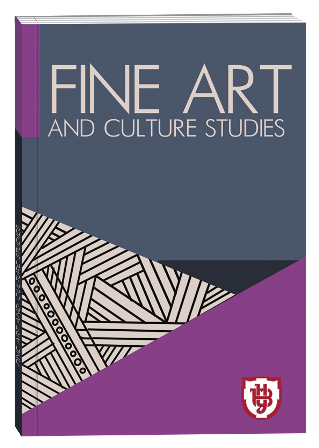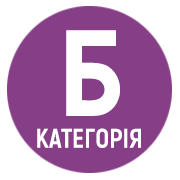THE STYLE SIGNS IN MAURICE RAVEL’S PIANO CONCERTS: FROM IMPRESSIONISM AND NEOCLASSICISM TO ECLECTIC AND CINEMA MUSIC
DOI:
https://doi.org/10.32782/facs-2022-3-10Keywords:
Ravel, piano concerto, impressionism, neoclassicism, eclecticism, cinema music.Abstract
The last period of Maurice Ravel’s creative activity, namely the 1930s, differs from the previous ones mainly in that the works of these years, even earlier ones, present the breadth and variety of stylistic vectors that were either already present in music or began to develop. Impressionism/post-impressionism and neoclassicism, which make up the stylistic face of the composer’s music and were his main styles, later began to be diluted by other, no less bright and recognizable, such as jazz, directions of modernism of the 30s (constructivism, urbanism, etc.), eclecticism, etc. Attention should be paid to eclecticism, since in Ravel’s music this direction marked the emergence of new creative tasks and is a peculiar turn of the composer’s path as a whole, including the only, unfortunately, unrealized experience of the composer’s work in cinema. This is his last work, The Three Songs of Doc Quixote, which were written for George William Pabst’s feature-adventure film Don Quixote (Great Britain – France, 1933). In the process of creation, the film underwent drastic changes, and producer Konstantin Heftman invited Jacques Iber, who had a track record of film music, to create music. Ravel’s songs were not included in the film. This is the only manifestation of the composer’s interest in cinema, but some compositional principles and stylistic diversity of his last works can be explained by the influence of the aesthetics of film music of that period. The aim of this article is an analysis of stylistic signs in two piano concertos by Maurice Ravel, including a comparative analysis of the two works from the point of view of their common features. The relevance lies in modern approaches in art history, which offer alternative methods in the study of world music classics. Undoubtedly, the work of the French composer Maurice Ravel is a source for the emergence of ideas that intersect with the latest scientific research into the understanding of musical heritage. The novelty is that a look at the stylistics of Maurice Ravel’s work, including his piano concerts, from the point of view of the interaction of different types of art (especially cinema) for the first time reveals interesting pages of the work of the famous composer. The methodology is based on a comparative analysis of Maurice Ravel’s concerts, an art history and cultural approach in the analysis of the interaction of musical structures, the figurative world and the method of compositions of both concerts. The conclusion summarizes how similar the piano concertos are in terms of style and composition, what hidden signs (including non-musical) unite these two works, taking into account the context and period of their writing.
References
Жаркова В. Авторское слово в творчестве М. Равеля. Науковий вісник НМАУ : збірник наукових праць. Київ : НМАУ, 2003. Вип. 27. С. 173–182.
Жаркова В. Морис Равель – «композитор-денди» (о правомерности постановки вопроса). Проблеми взаємодії мистецтва, педагогіки та теорії і практики освіти. Збірник наукових праць ХНУМ ім. І.П. Котляревського. Харків : С.А.М, 2012. Вип. 35. С. 259–269.
Жаркова В. О смысле загадок в творческом наследии Мориса Равеля. Науковий вісник НМАУ : збірник наукових праць. Київ : НМАУ, 2006. Вип. 59. С. 111–119.
Жаркова В.Б. Прогулки в музыкальном мире Мориса Равеля (в поисках смысла послания Мастера). Київ : Автограф, 2009. 528 с. 5. Жаркова В.Б. Творчество Мориса Равеля: музыкальные тексты и коммуникативный контекст : дис. … доктора мистецтвознавства : 17.00.03. Київ, 2009. 419 с.
Клименко В. Фортепианный концерт G-dur М. Равеля: правило игры – «игра с правилом»? Київське музикознавство : збірник наукових праць. Київ : КВМУ ім. P.М. Гліера, 1998. Т. 1. С. 227–239.
Goubault Ch. Maurice Ravel. Le jardin féerique. Paris : Minerve, 2004. 357 р.
Larner G. Maurice Ravel. London : Phaidon, 1996. 240 p.
Marnat M. Maurice Ravel. Paris : Fayard, 1995. 828 p.
Ravel au miroir de ses lettres / Gerar M., Chalupt R. Paris : Flammarion, 1989. 626 р.
Rousseau-Plotto E. Ravel, portraits basques. Paris : Seguier, 2004. 305 p.







